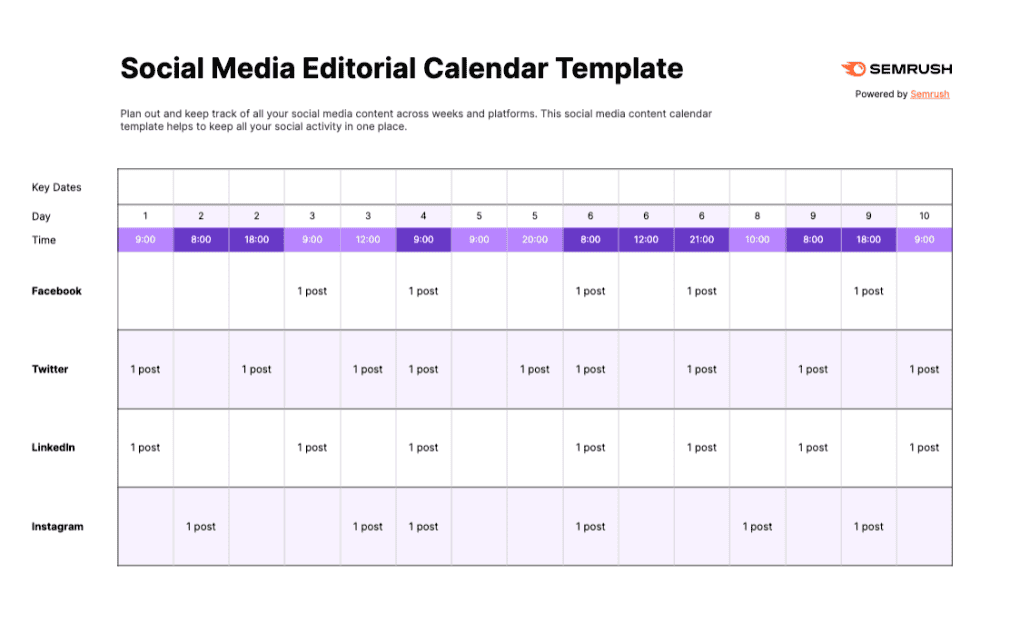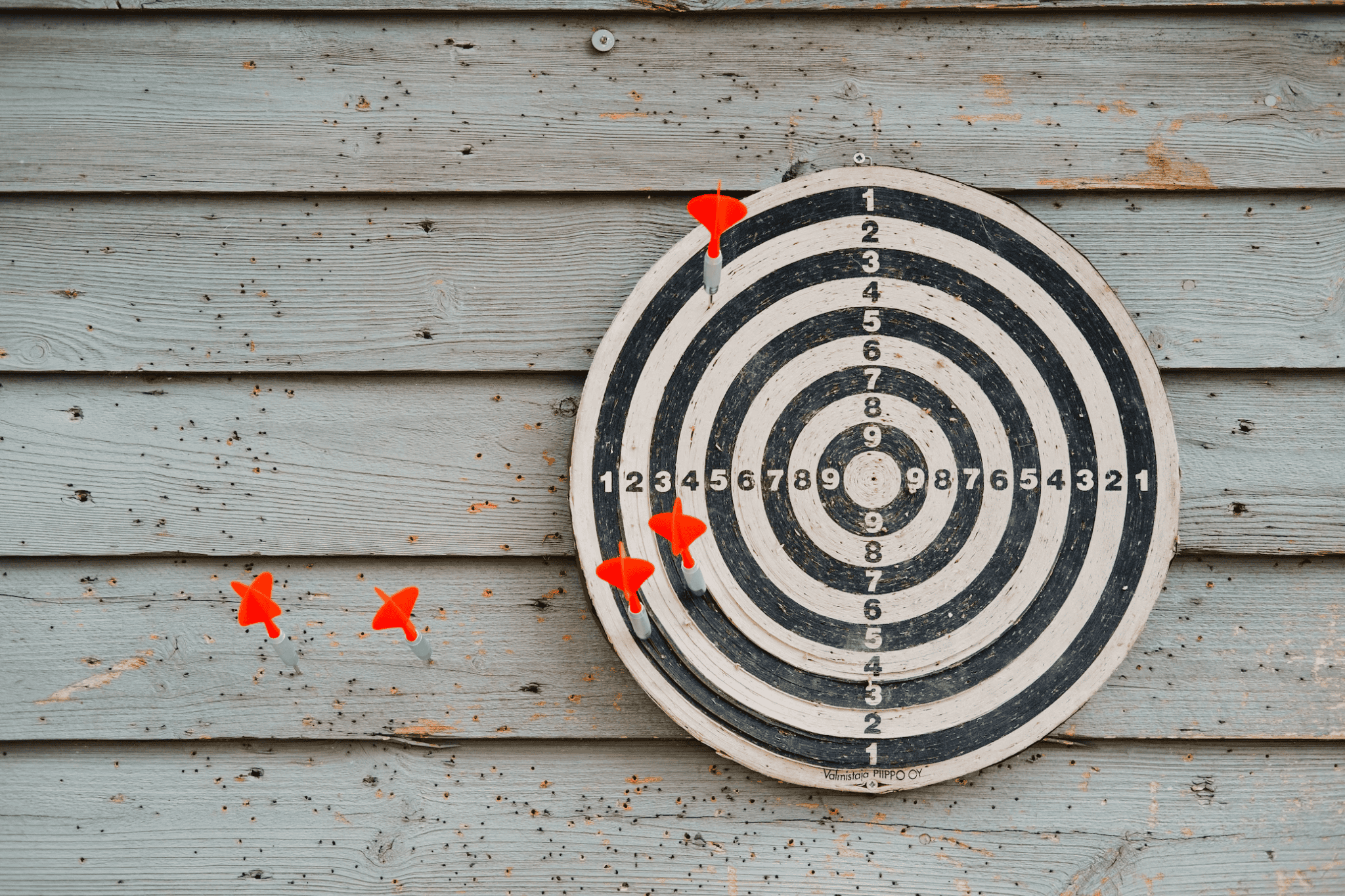Social media platforms were once places to make online friends. Now with more than 4.7 billion users worldwide, these platforms have turned into prominent marketing channels for every savvy business out there.
The face-paced world of social media is always changing. Thus, social media marketing can be a tough nut to crack. From user behavior to the algorithm, you need to always have your finger on the social media marketing pulse.
But one thing we know for sure: social media users can’t resist engaging with not only informative but also entertaining content.
And when we talk about social media content, it all starts with well-thought content planning.
Why Do You Need Social Media Content Planning?
As a business, you need to strategize your social media marketing efforts to ensure that all goals are aligned and achieved. This is where social media content planning comes in.
Content planning ensures that:
All pieces of content are aligned with your business goals
When you create content that’s aligned with your overall business objectives, you can measure its performance and impact on your bottom line more easily.
In other words, you can connect the dots between your content and business results.
A content calendar to track and measure performance
When you have all your upcoming content mapped out in advance, it’s much easier to track and measure performance.
You can see which pieces of content resonate with your audience and generate the most engagement.
Avoid a last-minute scramble for ideas and relevant topics
If you don’t plan ahead, you’ll likely find yourself scrambling for ideas at the last minute. This usually leads to lower-quality assets that don’t perform as well as they could’ve.
So, when done right, social media content planning can save you time, money, and resources while helping you achieve better results. It can ensure a strategic planning facilitation approach, guiding your content creation process towards overarching business goals.
Consistency across all content
From brand voice to messaging to tone, content planning can help you maintain consistency across all content. Consistency is key to boosting your brand recognition, which leads to building trust and credibility with your audience.
Doable and realistic content strategy
No biting more than you can chew. Social media content planning can help you create a content strategy that’s doable and realistic for different social media platforms. This way, you can avoid overwhelming yourself and your team.
What Do You Need to Include In Social Media Content Planning?
Now that we know the importance of social media content planning, it’s time to learn what’s actually included in such a plan.
As a minimum, your social media content plan should include the following:
1. Your business goals and objectives
First of all, you need to know what you want to achieve with social media. Do you want to increase brand awareness? Drive more traffic to your website? Generate more leads or sales?
Once you know your goals, you can start planning your content accordingly. For example, if you’re looking to generate more leads, then most of your content should be focused on top-of-the-funnel objectives like raising awareness and interest.
2. Your target audience
You also need to have a clear understanding of who your target audience is. What are their demographics? What are their interests and pain points?
Answering these questions will help you create content that’s relevant and resonates with your audience.
3. The types of content you’ll create
The third thing you need to consider is the types of content you’ll create. Will you be doing mostly blog posts, or will you also be doing infographics, videos, or other types of content?
Your answer will likely depend on your goals and target audience. For example, if you’re trying to reach younger audiences, then videos might be a good idea since that’s the type of content they consume the most. When you target professionals, e-books and whitepapers are preferable.
4. The topics you’ll cover
Once you know the types of content you’ll be creating, it’s time to start brainstorming topics. What are some relevant topics you can cover that would be of interest to your target audience?
5. The frequency of your content
The final thing you need to consider is how often you’ll be creating and sharing new content. This will likely depend on a number of factors, such as the size of your team, the types of content you’re creating, and your goals.
For example, if you’re a small business with a limited team, then you might only be able to create and share new content once or twice per week– unless you want to invest in AI-powered content marketing tools.
However, if you’re a large company with multiple teams working on different types of content, then you have the resources to publish new content every day.
6. A editorial calendar
Once you have all of the above information, you can start creating your editorial calendar. This is basically a document that outlines all of the content you’ll be creating and sharing, along with the date and time it will be published.
Here’s a template from SEMRush as an example:

Image from SEMRush
10 Best Ways to Create an Effective Social Media Content Planning
Now that we know what’s included in social media content planning, it’s time to learn how to create an effective plan.
1. Keep your goals and objectives in mind
As we mentioned before, the first step is to have a clear understanding of your goals and objectives.
Once you know what you want to achieve with social media, you can start creating content that’s aligned with those goals.

Photo from Unsplash
For example, if you’re trying to generate more leads, then most of your content should be focused on top-of-the-funnel objectives like raising awareness and interest.
However, if you’re trying to increase brand loyalty or sales, then you’ll want to create more bottom-of-the-funnel content like product demonstrations and customer testimonials.
2. Understand each social media platform
No emerging social media platforms are created the same. That’s why you need to understand how each social media platform works and what type of content performs best on each.
For example, Twitter is all about real-time conversations, so it’s important to create content that’s timely and relevant. Facebook, on the other hand, is more about building relationships and connecting with your audience on a personal level. And Instagram is all about visual content.
3. Combine data and instinct
When creating a social media content plan, data should always be your foundation. However, that doesn’t mean you should rely solely on data.
In content planning, data versus gut feeling is a false dichotomy. The best content plans always use a combination of both.
To do this, start by looking at your data to see what’s been performing well in the past. What types of content generate the most engagement? What topics are your audience most interested in?
Once you have a good understanding of what’s worked well in the past, you can start brainstorming new ideas that combine data with your team’s creativity and expertise.
You need to use your instincts and intuition to come up with content ideas that are creative and engaging.
So, for your keywords, topics, or hashtags, consider using a combination of data-driven and brand-specific ideas.
4. Consider the entire customer journey
One mistake businesses make when creating social media content is failing to align their content with different stages of the buyer’s journey. However, it’s important to create content that speaks to each stage of the journey, from awareness to purchase.

Photo from Unsplash
If you’re trying to increase brand awareness, then your content should focus on topics like industry news and trends. However, if you’re trying to generate more sales, then your content should be focused on things like product demonstrations and customer testimonials.
This way, you can ensure that you’re always providing value to your audience, no matter where they are in their journey.
5. Repurpose your content
Social media content planning isn’t all about creating brand-new content from scratch.
We all know that constantly producing new content can be time-consuming and expensive; it can even lead to a mental rut. A great way to save time and money is to repurpose your content.
This means taking a piece of content that’s already been created—such as a blog post or an infographic—and turning it into a different type of asset.
For example, you could turn a blog post into an infographic or a video. Or, you could take an old podcast episode and turn it into a series of social media posts.
6. Automate your posting process
Another great way to save time and make sure your content is always being published on time is to automate your posting process. Bulkly can help you with the automated schedule.
With the tool, you can create a posting schedule in advance and then set it up so that your content is automatically published at the specified times. This way, you can be sure that your content is always being published on time, even if you’re away from your desk.
#7. Make room to maneuver
Don’t do rigid social media content planning that puts you in a box. Leaving some room to maneuver will help you be more flexible and allows you to quickly adapt to changes, whether it’s a new algorithm update or a breaking news story. It’s ever-growing and ever-changing, so you need to be prepared for anything.
For example, you could create a bank of evergreen content that can be quickly repurposed in the event of a breaking news story. Or, you could create a folder of images that can be easily swapped out depending on the current trends.
8. Make your brand the life of the social media party
Your social media content should always be on-brand. But that doesn’t mean every piece of content needs to be serious and formal. In fact, some of the best social media content is lighthearted and fun.
Remember, no one on social media scrolling through their feeds just wants to be sold to. The key is to find a balance between being informative and entertaining. Don’t be afraid to let your brand’s personality shine through in your content.
9. Get everyone on board
The final tip is to make sure everyone on your team is on board with your content plan. This includes your social media manager, designers, writers, and anyone else who’s involved in the creation or distribution of your content.

Photo from Unsplash
It’s important to have regular meetings—either in person or over video call—to discuss the latest content plans and ensure that everyone is on the same page.
Additionally, you should create a shareable, accessible folder where all team members can access the latest version of the calendar and any other relevant documents.
10. Learn from the previous content campaign
No matter how well you think you’ve planned your social media content, there’s always room for improvement. That’s why it’s important to learn from your previous content campaigns and make adjustments accordingly.
For example, let’s say you published a blog post that didn’t perform as well as you’d hoped. In this case, you might want to consider making some changes, such as changing the headline, adding more visuals, or changing the format.
On the other hand, if you published a piece of content that received a lot of engagement, then you might want to consider creating more assets like it in the future. This could mean creating similar pieces of content or repurposing the content into different formats.
The bottom line is that you should always be growing and learning from your previous content campaigns. This way, you can continually improve the performance of your future content.
Start With a Well-Planned Social Media Content Strategy
In order to create a high-performing social media campaign, you need to start with a well-planned strategy. A content plan will bring your social media presence to a whole new level.
This means understanding your goals, target audience, and the types of content that perform best on each platform. Not to mention you need to make sure all of your content is aligned with your business objectives and create a posting schedule that’s realistic and doable.
